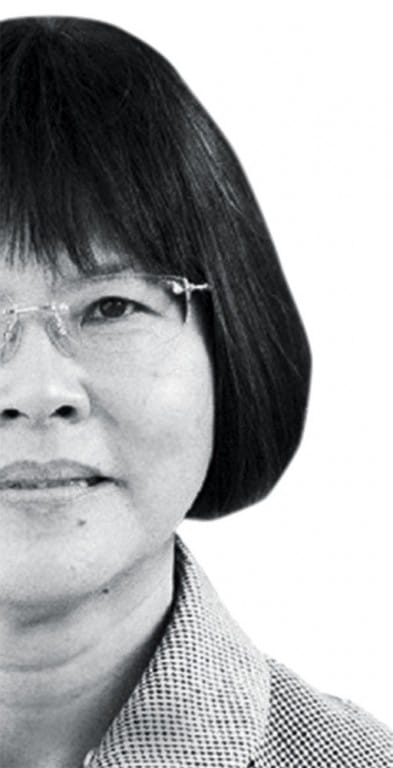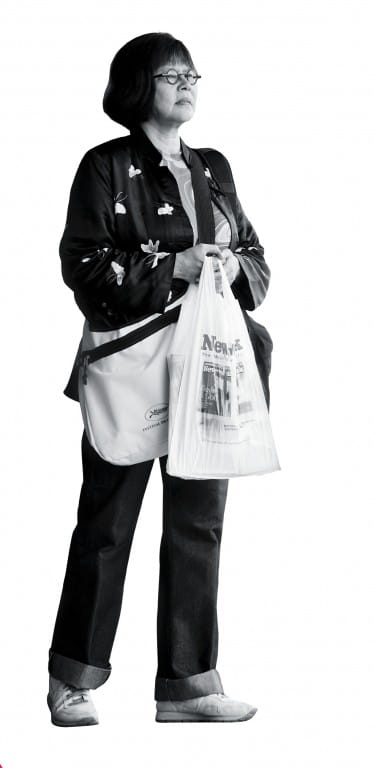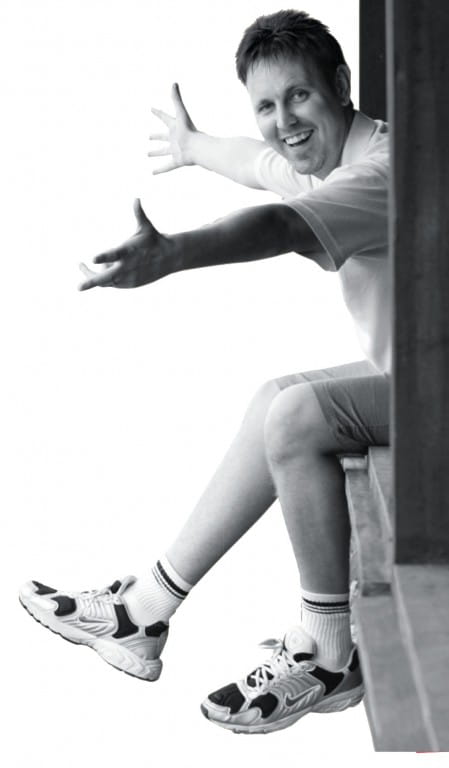Stories > Different Strokes
Different Strokes

Singaporean newspaper columnist and Singlish guru SYLVIA TOH PAIK CHOO and newly minted Permanent Resident NEIL HUMPHREYS give the lowdown on life and living in Singapore.
PHOTOS SPH LIBRARY
ylvia Toh Paik Choo is a writer, known especially for her humour columns in newspapers, magazines, books and now online. Born in Malaysia, she became a Singaporean in her late 20s.
She is also the definitive authority on Singlish (colloquial Singaporean English), writing about it back in 1982, way before it became a talking point.
She has worked in local print and broadcast media, and published books, including the Eh Goondu series on the use of Singlish. Neil Humphreys is a journalist and author of several best-selling books on Singapore.
Humphreys, who is British, came to Singapore in 1996 and worked as a teacher before joining Singapore’s largest English daily The Straits Times as a journalist in 1999.
In 2006, he moved to Australia with his family before returning to Singapore in 2011, and became a Permanent Resident in July this year.
In Singapore’s Golden Jubilee year, these two personalities explain why they love the country in their own uniquely Singaporean ways.
ON SG50
Toh: Great, a whole bunch of people got work winning tenders to produce nuts, bolts, stickers, banners, posters, signboards, bags, cards, songs and sketches, candy, magnets and flags – all emblazoned with the ubiquitous logo. In case you’ve been under a rock and somehow do not know, Singapore is 50 this year. That’s half a century, and both a landmark and milestone birthday for us all. So don’t be shy in standing up, and shouting out, ‘Happy birthday to us!’ Just don’t try blowing out the candles all at the same time.
THE MOST ICONIC SINGAPOREAN
Toh: There can only ever be a single answer to this – the Merlion. Even as we speak, surely the chaps in one of our science and research hubs are furiously working on creating a new improved ultimate creature – the Merlion version 2.0. Maybe it will spit fluorescent water. How come it never gets fined S$500?
ON THE “NEW-LOOK” SINGAPORE
Toh: Growing up, buildings had a shape and a design. Look at landmarks like the old OCBC Building, the old Telecom building, Mandarin Hotel, The Gateway, Tang Dynasty Village and UOB Towers 1 and 2. Today’s concrete landscape, other than Marina Bay Sands, leaves a lot to the imagination. Maybe the structures had to come up quick, practical and functional so shape and style were sacrificed? What I see is a lack in identity, but I’m citing our cityscape only.

Humphreys: The best thing to come out of SG50 is two-fold. First, there is a greater appreciation for Singapore’s heritage and perhaps an acknowledgement that there is more to this island’s life than a branded handbag and a frozen yogurt (though I never leave home without either). And second, ironically, there is an increasing realisation that Singapore didn’t begin life in 1965. It was a hugely significant year, but it wasn’t Year One. I’m all for SG50, but it’s hard not to think that bankers went to work in Raffles Place in 1965 armed with parangs (machetes), chopping their way through the mangroves every morning to get to the office.
Humphreys: The Singaporean auntie. Hear her roar. Singapore wouldn’t be where it is today without her. I love her. She scares me. I pray that never changes.
Humphreys: The new-look Singapore looks less and less Singaporean. Consider Singapore’s latest icon – Gardens by the Bay. It’s designed, built, maintained and mostly visited by foreigners. It’s about as Singaporean as my British mother-in-law. Singapore is being swamped by gentrification. I’ve got nothing against a good German sausage, but how many German bratwurst bars does the East Coast (an area in the east of Singapore) need? But then, I’ve often felt that what was really lacking in the new-look Singapore was another French patisserie. You have no idea how many times I’ve wandered around Tiong Bahru (one of Singapore’s oldest housing estates, now a hipster suburb) in a state of panic, shouting, ‘Has anyone got a fresh French pastry? It’s an emergency’.

ON THE SINGAPORE IDENTITY
Toh: I carve the period of 1965 to 2015 into three blocks, according to our three Prime MInisters. In Lee Kuan Yew's time, Mandarin was enforced at the expense of the English language. During Goh Chok Tong's tenture, we were made to improve on our English; he even spent Phua Chu Kang (a fictional character from a Singaporean sitcom who is noted for his use of Singlish catchphrases) to remedial classes. Now our job is to teach Singlish to the immigrants so they can better integrate. So the foreign worker on the train gets me when I say, 'Hullo, move hor, this reserved seat is auntie's place'.
ON SINGAPORE ICONS
Toh: Hello. I am one, okay! I wrote the first book on Singlish; I gaw it a spelling and punctuated it. So, besides my Eh Goondu tomes, what is iconic is how we go about our daily routine, I guess. For example, the way we 'chope' (reserve) seats in food centeres with tissue packs, umbrellas or newspapers. One expat said to a local when he removed her pack of tissue on an empty seat, 'Excuse me, I didn't realise you were Miss Watsons' (Watsons is a brand of tissues).
ON THEIR DEFINITIVE SINGAPOREAN MOMENT
Toh: I shouldn’t say because it’d make me one of frequently cursed 'foreign talents'. But it was when I swore my troth to Singapore and became a citizen in my late 20s. I'm from across the Causeway - Penang to be exact - and had joined the Straits Times Press on a work permit. My editor offered me a London trip but I had no passport. My late father, a grassroots leader even then, scared up a British passport for me ands I went to Carnaby Street. Eventually, I traded it in for a Singapore passport since none of the Beatles would have me. Lately it's getting my Pioneer Generation pack (health-care benefits to help older Singaporeans with health-care costs) in the mail; plus the free S$50 top-up for my senior citizen MRT card. Anything remind me I'm way older than my own country.

Humphreys: When I first arrived in Toa Payoh in 1996, every man, woman, child and stray dog welcomed me with open arms. At that time, the population was hovering around the four million mark. We had room to breathe. After 10am, a seat on the MRT, just about anywhere, was the norm. We accpeted eatch other and welcomed foreigners into a wonderfully electric country. We didn't mind the ang moh (Caucasian) who looked like Ah Meng (a Sumatran orang utan and tourism icon of Singapore) on the MRT. But that tolerance has been tested. Suddenly, no one had a seat on the MRT. The orang utans at the Singapore Zoo had bigger enclosures thatn we did. On the one hand, Singaporeans do beleive that a sense of national identity is being lost and I empathise with that. But at the same time., not every foreigner is Anton Casey either. (Casey is a British expat who caused an uproar here last year for his Facebook remarks about public transport commuters.) It's all about finding that middle ground, to save what we can of our national identity, but also to appreciate that every country evovles.
Humphreys: Where do you start? My random Singaporean icons would be packets of tea at food stalls and packets of tissues on seats, aunties slapping seats on buses, uncles playing checkers on void decks, ERP gantries, Singaporean DJs speaking with surreal American accents, American expats speaking Singlish by adding 'lah' after every sentence, pasar malam (night market) stalls selling exam papers, the priceless reservoirs and reclaimed land. To paraphrase the Great War poet Rupert Brooke, ‘There’s some corner of Singapore,
that is for ever reclaimed’. It’s called Tuas.
Humphreys: The moment when I knew that England was in my blood but the sunny island had seeped into my soul happened sometime in 2011. I grew up in England and lived in Australia, and when I visit both countries, I always enjoy the experience. But every time I land at Changi, without exception, I just feel at home. It’s a deep, primal thing. And then, I step outside Changi Airport and immediately complain about the weather.
